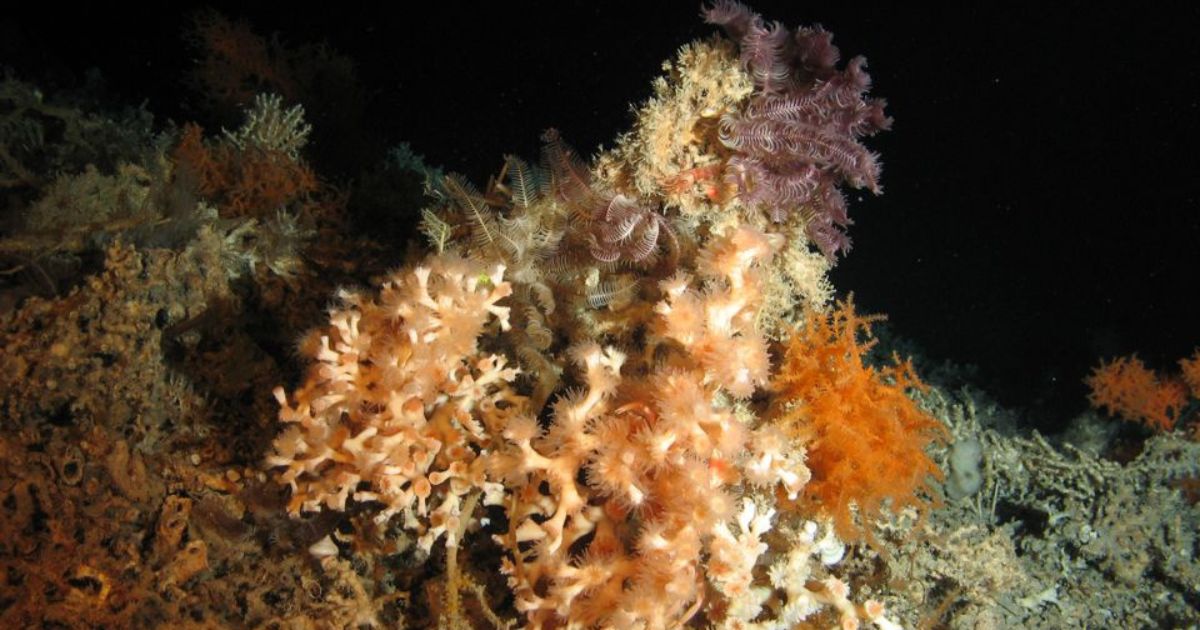Corals react to changes in their environment. This is true for tropical as well as cold-water corals and includes, among others, changes in temperature, salinity and pH values. MARUM researchers, in a study led by Dr. Rodrigo da Costa Portilho-Ramos, have now investigated how warmer temperatures occurring as a result of climate change are affecting cold-water corals. For this purpose, they examined in detail how these corals have reacted to environmental changes over the past 20,000 years. Their study has been published in the professional journal PLOS Biology.
Cold-water corals, and the species Lophelia pertusa in particular, are the architects of complex reef structures. They build the foundations of important habitats for deep-sea organisms that find protection as well as food within the structures. Coral reefs, however, react very sensitively to changing conditions. These include warming of the ocean waters, acidification, declining oxygen content, and the variable supply of food. A change in any one of these parameters, as a consequence of global climate change, for example, can impact the health of the total coral reef. According to the new study, therefore, it is important to understand exactly how these ecosystems react to environmental changes in order to be better able to protect them more effectively in the future.
First author Rodrigo da Costa Portilho-Ramos of MARUM — Center for Marine Environmental Sciences of the University of Bremen, with his colleagues, examined sediments from six cold-water coral locations in the North Atlantic and the Mediterranean in order to identify of the critical parameters that could trigger the mortality and ensuing proliferation of cold-water corals. Information providing insights to the environmental conditions of the past are stored in these sediments. This fact allows researchers to determine when and why cold-water corals flourished or not. The authors point out that the results could also be used to show how corals might respond to future climatic changes. The study analyzes the changes of the most important environmental factors over the past 20,000 years, the period of general global warming since the last glaciation, and compares them with the occurrence of the cold-water corals.
“We looked back into the past to understand how Lophelia pertusa reacted to environmental changes,” says Portilho-Ramos. The corals vanished from or returned to a region mainly when the food supply or the oxygen content of the water changed. Cold-water corals feed on microscopically small plankton and other particles that are transported by ocean currents. The temperature and salinity of the water had little effect on the mortality or proliferation of cold-water corals. As Portilho-Ramos points out, “we therefore assume that food supply and availability of oxygen are the primary factors that determine the life or death of cold-water corals.” It is not clear what kind of impact ocean acidification has over the long term because there is no paleoceanographic indicator for this parameter.
Acting as ecosystem ‘engineers’, cold-water corals contribute significantly to the formation of biodiversity hotspots in the deep sea. With their influence on food webs and nutrient cycles, their role as fish nurseries and their impressive biodiversity, cold-water coral reefs provide important ecosystem services. In order to continue these services in a future under the influence of climate change, the results of this study form an important foundation for developing knowledge-based management strategies for such deep-sea ecosystems. They also contribute significantly to the goals of the Bremen Cluster of Excellence, which is dedicated to the study of the ocean floor.
By MARUM – Center for Marine Environmental Sciences, University of Bremen
Journal Reference:
Rodrigo da Costa Portilho-Ramos, Jürgen Titschack, Claudia Wienberg, Michael Georg Siccha Rojas, Yusuke Yokoyama, Dierk Hebbeln. Major environmental drivers determining life and death of cold-water corals through time. PLOS Biology, 2022; 20 (5): e3001628 DOI: 10.1371/journal.pbio.3001628

